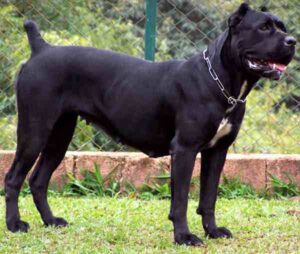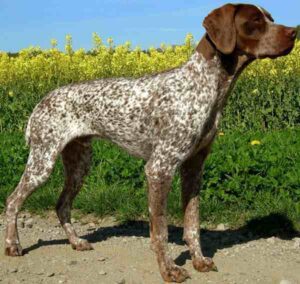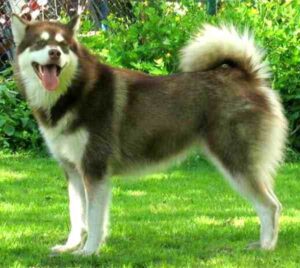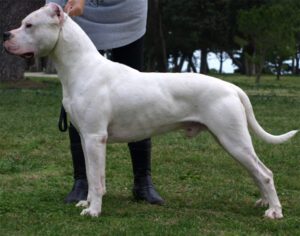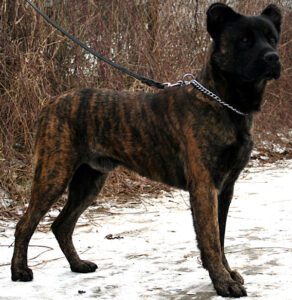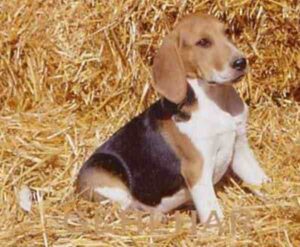The Border Collie dog is a very beautiful breed of working and herding dog, which was specifically bred for intelligence and obedience. It is very fetch-oriented. It is also known as Scottish Sheepdog, and it is sometimes confused with the related Welsh Sheepdog.
The Border Collie dog breed was developed in the Scottish borders. It is considered highly intelligent, extremely energetic, acrobatic and athletic. These dogs frequently compete with great success in sheepdog trials and dog sports.
The Border Collie dogs are often cited as the most intelligent of all domestic dogs. They continue to be employed in their traditional work of herding livestock throughout the world and are kept as pets.
The Border Collie dog is actually descended from landrace collies, a type found widely in the British Isles. The name for the breed came from it’s probable place of origin along the Anglo-Scottish border.
Mention of the dogs of this breed type first appeared toward the end of the nineteenth Century. Although, the word ‘collie’ is older than this and has it’s origin in the Scots language. It is also thought that the word ‘collie’ comes from the old Celtic word for useful. Many of the best dogs of this breed can be traced back to a dog known as Old Hemp.
James Reid, Secretary of the ISDS (International Sheep Dog Society) in the United Kingdom first used the tern ‘Border Collie’ in 1915, to distinguish those dogs registered by the ISDS from the Kennel Club’s collie which originally came from the same working stock but had developed a different, standardized appearance following introduction to the show ring in 1860 and mixture with different breeds.[1]
Border Collie Dog Characteristics
The Border Collie dogs are very beautiful and medium in size. They have a moderate amount of coat, which is more often thick and prone to shedding. They have a double coat that varies from smooth to rough and is occasionally curled.
Most common color pattern of the Border Collie dog is black and white. But the breed appears in just about any color and pattern known to occur in dogs. Some of these include black tricolor (black/tan/white), liver and white, and red tricolor (red/tan/white) which have also been seen regularly, and other colors such as blue, lilac, red merle, blue merle, brindle, and Australian red (also known as ee red, blonde, recessive red, or gold) which is seen less frequently. Some border collies may also have single-color coats.
Eye color of the Border Collie dog varies from brown to blue, and occasionally eyes of different color occur, this is usually seen in merles. Their ears are also variable. Some dogs have fully erect ears, some have fully dropped, and others have semi-erect ears.
The Border Collie dogs are medium in size. Average height of the mature dog is between 19 and 22 inches at the withers for males, and between 18 and 21 inches for the females. Average live body weight of the mature dogs is between 14 and 20 kg for males, and between 12 and 19 kg for females.
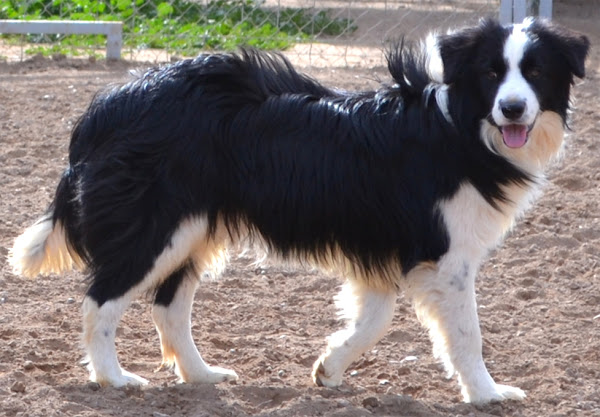
Temperament
The Border Collie dogs are alert, energetic, hardworking and smart. They learn quickly, actually so quickly that it’s sometimes difficult to keep the dogs challenged.
The Border Collie dogs like to be busy. In fact, they must be busy or they will become bored, which leads to annoying behavior such as barking, digging or chasing cars. The breed is not a dog to lie quietly on the front porch, it thrives on activity. Remember, it was bred to run and work all day herding sheep.
These dogs are also renowned for being highly sensitive to their handler’s every cue, from a whistle to a hand signal to a raised eyebrow.
Lifespan
Lifespan of the Border Collie dog is between 10 and 17 years, with an average lifespan of 12 years.
Feeding
How much a mature dog eats depends on it’s size, age, build, metabolism and activity level. Dogs are individuals, just like people, and they don’t all need the same amount of food.
The Border Collie dogs are medium in size and very active. So, their diet should be formulated for a medium sized breed with high exercise needs. You can consult with a vet in your area for better recommendations.
Caring
Taking good care of the animals is very important for raising Border Collie dogs. It is a highly adaptable dog, and is best suited to an environment that gives it some room. A city home with a securely fenced yard, or a country farm or ranch is appropriate for them.
Regardless of the environment, these dogs require a great deal of mental and physical stimulation every day, and they also need an owner who is willing and able to provide them both. This can be a great burden to owners who don’t know what they are getting into.
If you are considering to raise a Border Collie, make sure you can provide the dog with a proper outlet for it’s natural energy and bright mind.
Health
The Border Collie dogs are generally healthy. But like all other dog breeds, they are also prone to certain health conditions.
Their common health problems include hip or elboe dysplasia, hypothyroidism, von Willebrand’s disease, epilepsy, progressive retinal atrophy and allergies. Always try to keep good contact with a vet in your area.
| Breed Name | Border Collie |
| Other Names | Also known as Scottish Sheepdog |
| Breed Size | Medium |
| Height | Between 19 and 22 inches at the withers for males, and between 18 and 21 inches for the females |
| Weight | Between 14 and 20 kg for males, and between 12 and 19 kg for females |
| Good as pets | Yes |
| Climate Tolerance | All climates |
| Color | Solid coloured, bicoloured or tricoloured on blue merle, red merle, chocolate merle, liver, lilac merle, bear, chocolate, lilac, blue, sable merle, sable, shaded sable, chocolate sable, black, white, red, brindle or orange |
| Lifespan | Between 10 and 17 years |
| Good for children | Yes |
| Rarity | Common |
| Country of Origin | Border region of Scotland and England |

